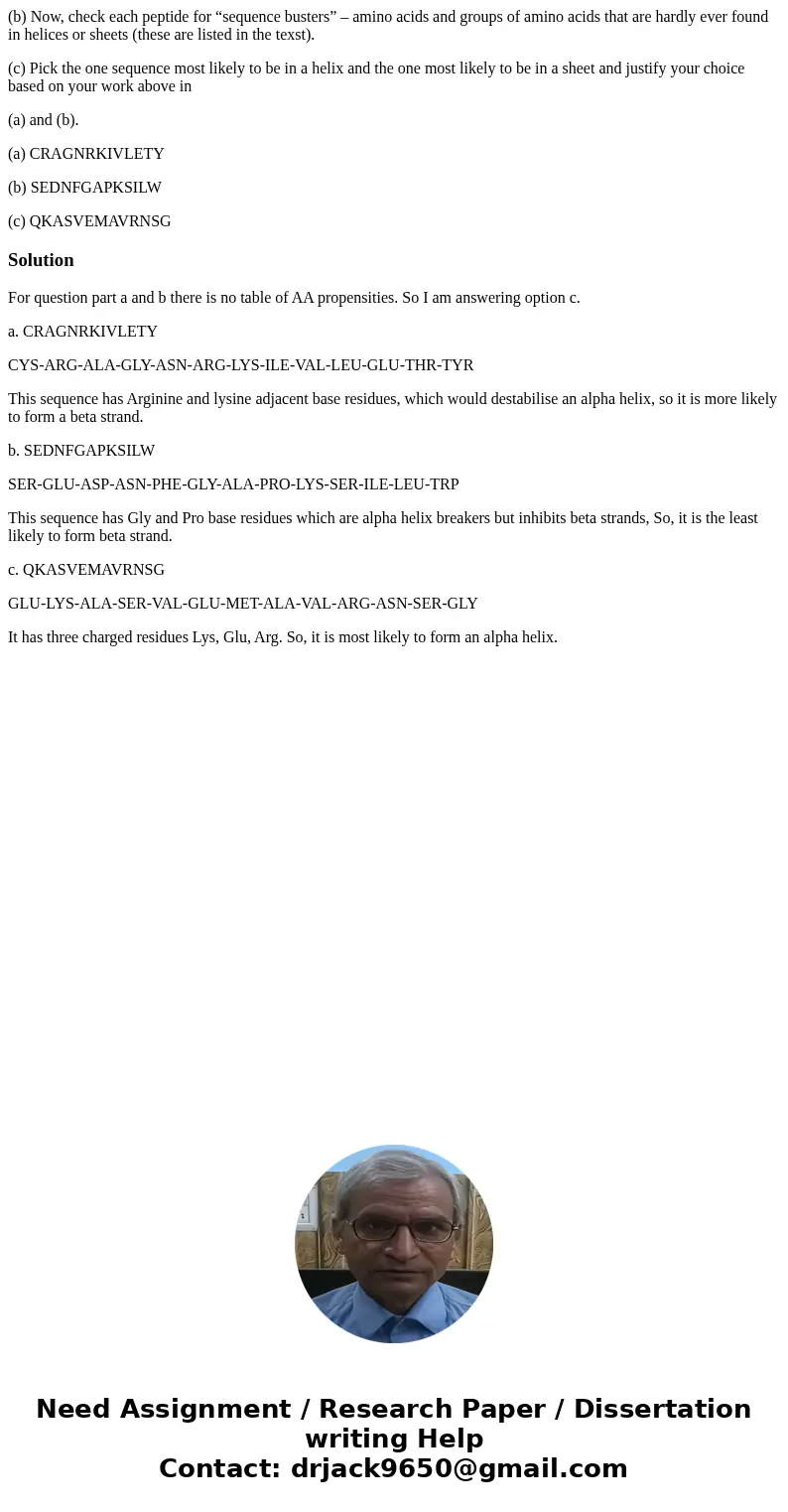b Now check each peptide for sequence busters amino acids a
(b) Now, check each peptide for “sequence busters” – amino acids and groups of amino acids that are hardly ever found in helices or sheets (these are listed in the texst).
(c) Pick the one sequence most likely to be in a helix and the one most likely to be in a sheet and justify your choice based on your work above in
(a) and (b).
(a) CRAGNRKIVLETY
(b) SEDNFGAPKSILW
(c) QKASVEMAVRNSG
Solution
For question part a and b there is no table of AA propensities. So I am answering option c.
a. CRAGNRKIVLETY
CYS-ARG-ALA-GLY-ASN-ARG-LYS-ILE-VAL-LEU-GLU-THR-TYR
This sequence has Arginine and lysine adjacent base residues, which would destabilise an alpha helix, so it is more likely to form a beta strand.
b. SEDNFGAPKSILW
SER-GLU-ASP-ASN-PHE-GLY-ALA-PRO-LYS-SER-ILE-LEU-TRP
This sequence has Gly and Pro base residues which are alpha helix breakers but inhibits beta strands, So, it is the least likely to form beta strand.
c. QKASVEMAVRNSG
GLU-LYS-ALA-SER-VAL-GLU-MET-ALA-VAL-ARG-ASN-SER-GLY
It has three charged residues Lys, Glu, Arg. So, it is most likely to form an alpha helix.

 Homework Sourse
Homework Sourse